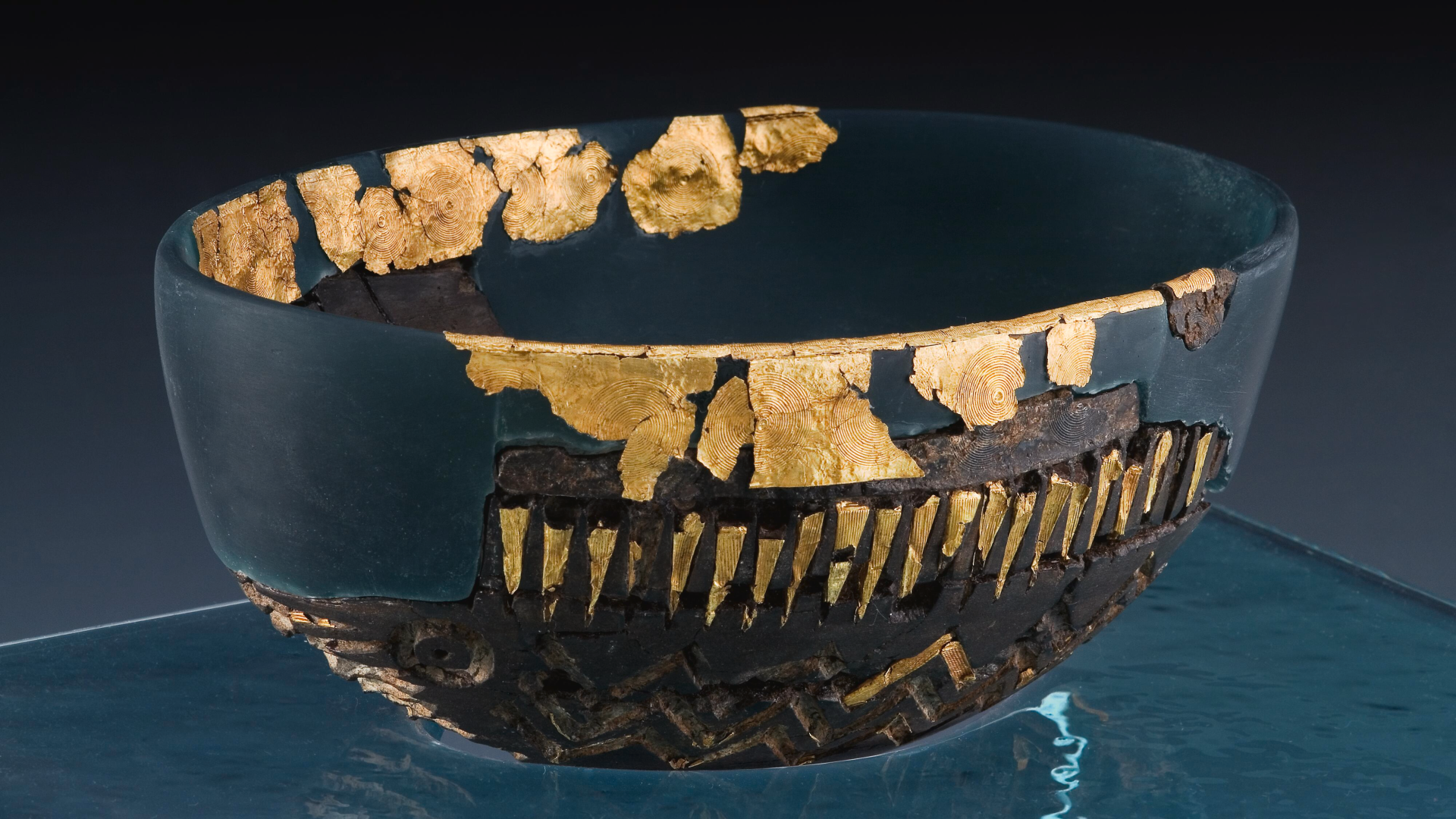Caergwrle Bowl: A 3,300-year-old stone-and-tin bowl with gold oars and 'protective eyes'
The ancient stone-and-tin bowl was discovered 200 years ago in a boggy field in Wales.

Name: Caergwrle Bowl
What it is: A shale bowl with gold and tin decorations
Where it is from: Caergwrle Castle, in Wales
When it was made: Circa 1300 to 1150 B.C.
About 200 years ago, while digging in a boggy field in Wales, a worker struck a rare, ancient bowl shaped like a ship. The Caergwrle Bowl, named after a nearby castle, showcases the importance of nautical travel in Great Britain's Middle Bronze Age (roughly 1500 to 1000 B.C.).
According to Museum Wales, which has the artifact in its collection, the Caergwrle Bowl was made from shale and tin from counties in southwest England; and gold from Ireland or Wales. About half the original artifact remains today, but when complete, the oval bowl was about 7.2 inches (18.2 centimeters) long and 3.1 inches (7.8 cm) deep.
The inside of the bowl is not decorated, but the exterior and the rim have been ornamented with gold-foil-covered tin in a variety of shapes.
"We think the zig-zags around the base are waves and the long triangles are oars," Museum Wales representatives wrote. "The eye symbol protected sailors. The circles are the shields of its heroic voyagers."
But a slightly different interpretation was put forward by nautical archaeologists in a 1980 study of the bowl.
Rather than seeing the concentric circles on the gold rim as shields, researchers argued that the closest parallel can be found in Bronze Age sun symbolism, such as the Nebra Sky Disc — which may also depict a boat — and the Nordic "Sun Chariot." And instead of the zigzag lines representing waves, the lines could depict the boat's wooden frame showing through the skins that were stretched over it.
Regardless of the exact meaning of the designs on the Caergwrle Bowl, its discovery in a boggy field near the River Alun, which flows toward the Irish Sea, strongly suggests it was created as a representation of a boat, according to Museum Wales. And considering many Bronze Age sun artifacts have been found in bogs as offerings to the gods, the Caergwrle Bowl was likely meant to be an ancient votive offering, perhaps by sailors seeking a safe sea journey.
Get the world’s most fascinating discoveries delivered straight to your inbox.
For more stunning archaeological discoveries, check out our Astonishing Artifacts archives.

Kristina Killgrove is a staff writer at Live Science with a focus on archaeology and paleoanthropology news. Her articles have also appeared in venues such as Forbes, Smithsonian, and Mental Floss. Kristina holds a Ph.D. in biological anthropology and an M.A. in classical archaeology from the University of North Carolina, as well as a B.A. in Latin from the University of Virginia, and she was formerly a university professor and researcher. She has received awards from the Society for American Archaeology and the American Anthropological Association for her science writing.
You must confirm your public display name before commenting
Please logout and then login again, you will then be prompted to enter your display name.
